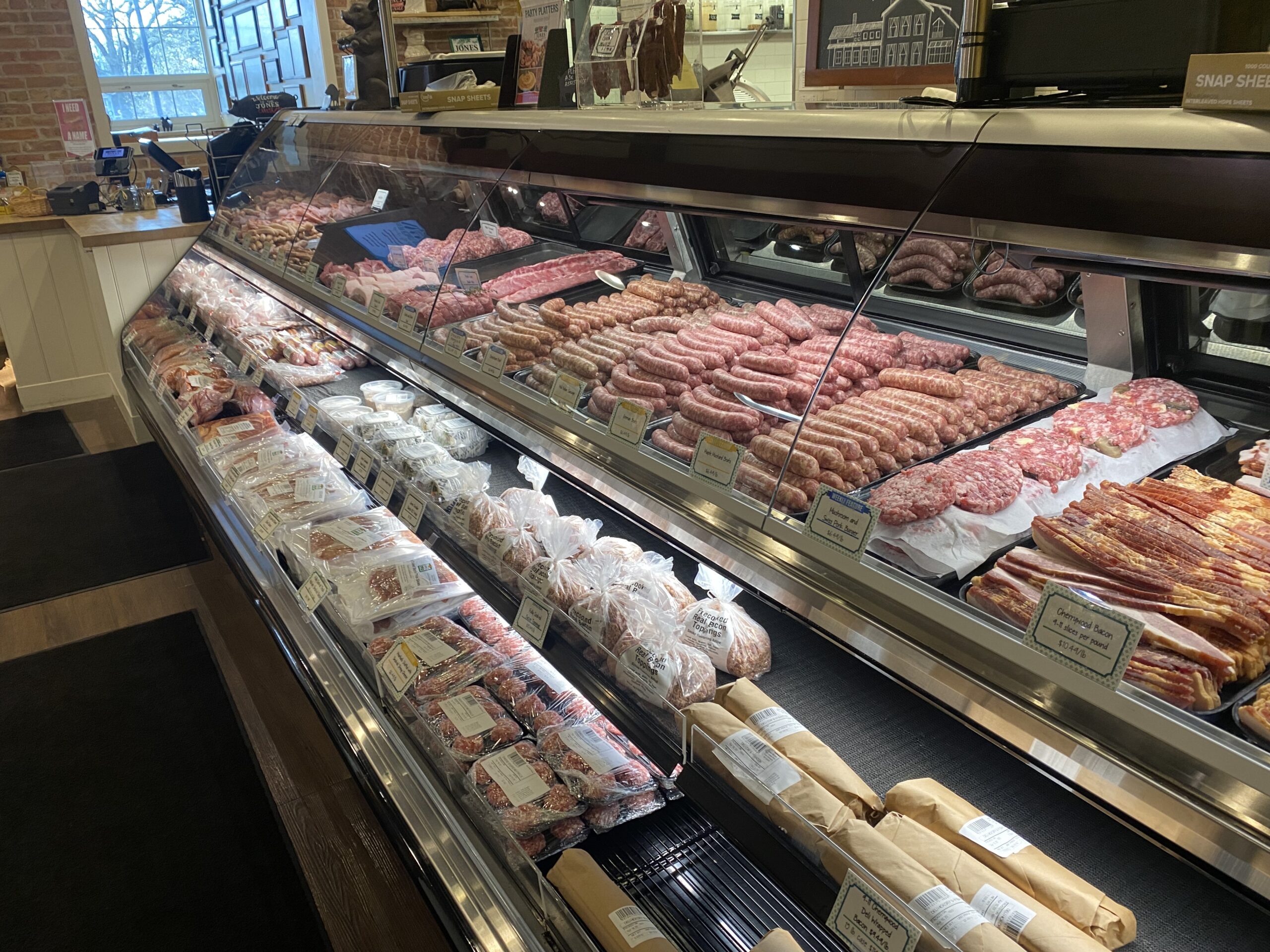Bagley Farms Meat Market Edwardsville IL: Your Relied On Resource for High-Quality Meats
Bagley Farms Meat Market Edwardsville IL: Your Relied On Resource for High-Quality Meats
Blog Article
Reveal the Art of the Butcher's Cut in a Modern Meat Market
In the ever-evolving landscape of modern meat markets, the butcher's cut has actually transcended its typical roots, combining age-old workmanship with modern techniques. Today's butchers are not simply processors of meat; they are well-informed artisans that highlight sustainability and moral sourcing. Their competence in picking and preparing cuts tailored to specific cooking demands provides an unequaled dining experience. Yet, what really sets the modern-day butcher apart is their capability to forge a much deeper connection between customers and the origins of their meat. Just how do these masters balance practice with advancement, and what ramifications does this have for the future of meat usage?
Development of Butchery Strategies
The development of butchery strategies shows an abundant tapestry of innovation and adjustment driven by advancements in modern technology, changes in customer need, and a deeper understanding of meat scientific research. Historically, butchery was a craft gave through generations, with techniques honed over centuries to maximize yield and taste. However, the industrial change introduced mechanization, transforming typical practices and allowing large processing.
The mid-20th century saw butchery methods additionally improved by clinical insights into muscle mass biology and meat aging, improving both inflammation and preference. Innovations like vacuum packaging and refrigeration prolonged item shelf-life, permitting butchers to expand offerings and boost quality control. This period also marked the rise of specific devices, such as band saws and meat slicers, which boosted accuracy and performance in meat handling.

Computerized systems currently help in tracking pet provenance and maximizing cuts to satisfy particular consumer choices. Additionally, a resurgence in artisanal butchery has actually emerged, mixing standard skills with modern-day understanding to cater to customers seeking moral and sustainable meat alternatives.
Recognizing Meat Cuts
Understanding the ins and outs of meat cuts is important for both butchers and customers looking for quality and value. For butchers, specific cuts reflect skill and respect for the craft, guaranteeing marginal waste and optimal return.

Understanding muscular tissue structure is crucial; muscles made use of a lot more frequently by the pet have a tendency to be tougher and are best matched for sluggish cooking approaches, while less-used muscle mass, like those found in the loin, are extra tender and suitable for grilling or roasting. Knowledge with these distinctions encourages consumers to make educated options, boosting their culinary undertakings.
Choosing Quality Meat
Selecting the right meat entails greater than just selecting a visually enticing piece from the screen. bagley farms meat market edwardsville il. The art of picking high quality meat requires a discerning eye and expertise of particular attributes that symbolize quality and excellence. Pay interest to the shade; beef needs to have a bright, cherry-red color, while lamb needs to exhibit a soft pink tone, and pork a pale pink. This shows the meat is fresh and hasn't been exposed to oxygen for too lengthy.
Secondly, consider the marbling, which refers to the white streaks of fat within the muscular tissue. Appropriate marbling is a vital indicator of tenderness and flavor, as it melts during cooking, improving the meat's juiciness. Keep in mind, higher marbling often correlates with premium quality cuts, such as USDA Prime.
Structure is one more important variable; meat needs to really feel solid to the touch, not slimed or extremely soft. In addition, be conscious of the aroma. Fresh meat needs to have a tidy, neutral scent, devoid of any sour or off-putting odors.
Pairing Cuts With Food Preparation Approaches

On the other hand, tougher cuts like brisket and chuck roast are abundant in collagen, which damages down right into jelly when cooked slowly. These cuts are excellent for braising or sluggish roasting, permitting the meat to soften with time try this out and create deep, complex tastes. Cuts such as brief ribs and pork shoulder make out well with slow-cooking approaches, where expanded cooking times change their durable appearances into succulent dishes.
Lamb shanks and oxtail, which require prolonged cooking to tenderize, are perfect candidates for stewing or slow simmering. These methods coax out rich, hearty tastes while keeping dampness. By recognizing the one-of-a-kind characteristics of each cut, cooks and home chefs alike can boost their cooking productions, making certain each recipe is both pleasing and unforgettable.
The Butcher's Function Today
Navigating the evolving landscape of the modern-day meat market, the butcher's function today extends past mere prep work of cuts. Contemporary butchers are culinary craftsmens, teachers, and advocates for lasting practices. They link the space in between the farm and the fork by ensuring honest sourcing, understanding pet husbandry, and prioritizing openness in the supply chain. This shift mirrors the growing customer demand for top quality over quantity, where provenance and pet welfare are vital.
In addition to crafting specific cuts, butchers now involve directly with clients, supplying cooking guidance and customizing selections you can try this out to fit specific needs and choices. Their knowledge in meat aging, marbling, and flavor profiles encourages customers to make informed choices, improving their cooking experiences. This personalized solution exemplifies the butcher's advancing duty as a trusted advisor in the cooking area.
Additionally, butchers are essential in minimizing waste, using entire animals to create varied products such as sausages and supplies. This detailed method not just values the animal however also aligns with modern sustainability goals. This way, the modern-day butcher personifies both practice and advancement, adapting to an ever-changing market while maintaining the creativity and honesty of their craft.
Verdict
Proficiency in recognizing diverse meat cuts and quality indicators encourages butchers to give enlightened recommendations, lining up specific cuts with optimum cooking methods. By recognizing historical practices while accepting modern needs, the butcher's function continues to be important in today's sophisticated meat market.
Report this page